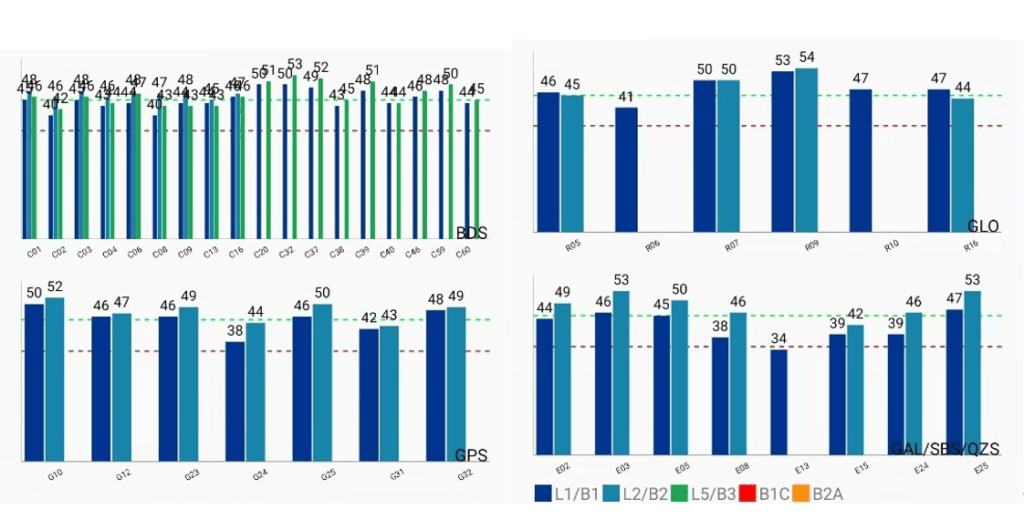ComNav has released the following article explaining how to analyse the signal quality for GNSS technologies used in applications such as UAVs (unmanned aerial vehicles) and autonomous driving.
With the rapid development of high-precision GNSS technology, more and more industries have adopted this positioning and navigation technology for established applications such as surveying and mapping, machine guidance, GIS, as well as new markets such as automated driving, IoT and smart cities. No matter the application, positioning accuracy and reliability is of great importance, and depends both on the positioning algorithm used, and the GNSS signal quality.
From the users’ point of view, it is difficult to judge the algorithm when evaluating a GNSS device. As for the signal quality, there are several indicators to evaluate, such as integrity, multi-path, and SNR (signal-to-noise ratio). This article explains how to analyze GNSS signal quality based on SNR.
SNR indicates the relationship between carrier signal and carrier noise, which equates to carrier power/noise power. In a satellite communication system, the best antenna arrangement can get the best SNR. A high SNR can provide a better network reception rate, better network communication quality, and better network reliability. It is one of the important indicators for evaluating carrier phase observations.
 However, the standard value of SNR for each constellation and each frequency is not the same. Users need to evaluate the signal quality for each satellite one by one, referring to the theoretical value, and so it may not be convenient for users to obtain a quantitative solution for evaluating signal quality.
However, the standard value of SNR for each constellation and each frequency is not the same. Users need to evaluate the signal quality for each satellite one by one, referring to the theoretical value, and so it may not be convenient for users to obtain a quantitative solution for evaluating signal quality.
 In order to simplify the analysis process and allow users to evaluate signal quality more intuitively, the R&D team at ComNav Technology defined an SNR score for overall evaluation. This indicator can measure the ability of a GNSS receiver to receive signals and reflect its signal tracking and acquisition performance. The short-term oscillation can reflect the signal interference by other factors. When researching and analyzing the SNR, the R&D team mainly extracted the SNR from GNSS observation data, and used a method of averaging to calculate its index value.
In order to simplify the analysis process and allow users to evaluate signal quality more intuitively, the R&D team at ComNav Technology defined an SNR score for overall evaluation. This indicator can measure the ability of a GNSS receiver to receive signals and reflect its signal tracking and acquisition performance. The short-term oscillation can reflect the signal interference by other factors. When researching and analyzing the SNR, the R&D team mainly extracted the SNR from GNSS observation data, and used a method of averaging to calculate its index value.
The steps of the process included:
Theoretical SNR – the theoretical value of each satellite on each frequency at each epoch was calculated based on the elevation cutoff angle.
Actual SNR – the actual SNR value of each satellite on each frequency at each epoch was extracted from the GNSS raw data.
SNR score – The SNR score of each satellite on each frequency at each epoch is equal to (the actual SNR value)/(theoretical SNR value) × 100%
SNR score of each epoch – the average value of SNR scores for every satellite and every frequency at the same epoch.
The higher the SNR score, the closer the actual SNR is to the theoretical SNR, indicating that the signal is less interfered with by other factors and the data quality is more reliable.
 For SinoGNSS products, a customized message is defined to display the SNR score information, which has also been designed for dual-antenna GNSS receivers. As shown in the message below, the bold parameters indicate the SNR score of the master antenna and slave antenna in turn, and the signal quality for both antennas is shown to be excellent.
For SinoGNSS products, a customized message is defined to display the SNR score information, which has also been designed for dual-antenna GNSS receivers. As shown in the message below, the bold parameters indicate the SNR score of the master antenna and slave antenna in turn, and the signal quality for both antennas is shown to be excellent.
$KSXT,20210906104914.00,121.29239578,31.34996850,33.3672,276.66,43.34,83.17,0.102,0.00,1,3,39,42,,,,0.101,0.012,0.143,96,95,*21
The abnormal SNR reflects the magnitude of the interference affected by the signal. Usually, the SNR on the 1Hz bandwidth is used as the signal quality indicator. The magnitude of the SNR will directly affect the performance of signal capture and tracking, and also affects the performance of the entire positioning solution. It is an index to measure the reliability of acquisition and tracking, and can be used to screen satellites suitable for participating in the navigation and positioning solution.


















